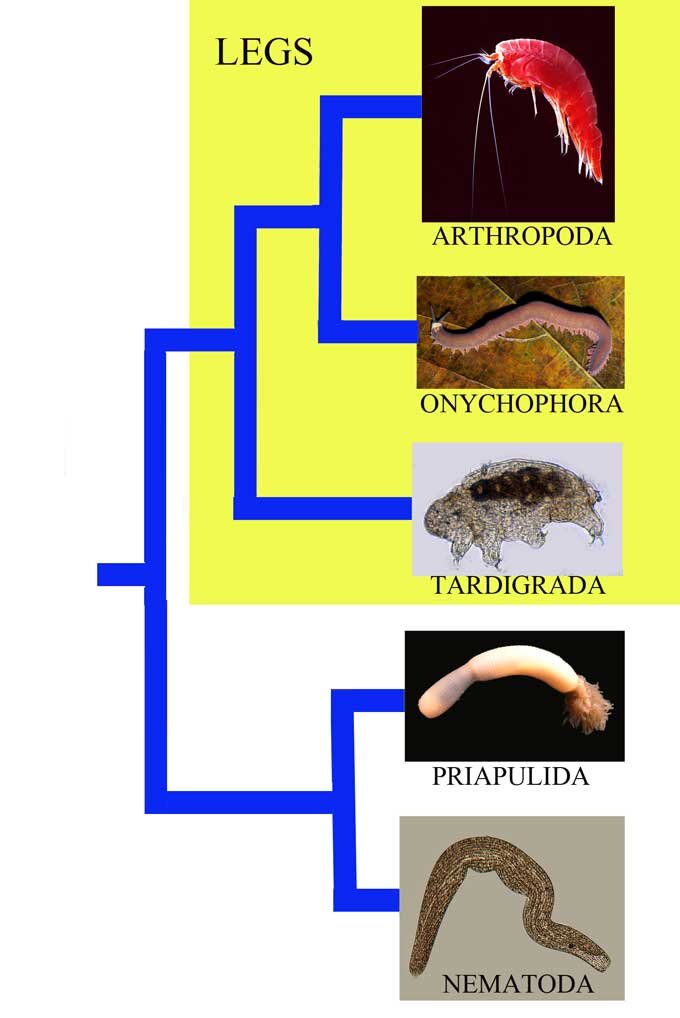Resumen
Estos misteriosos gusanos producen una red instantánea que usan para cazar; muchas especies no ponen huevos, sino que dan a luz sus crías que se alimentan a través de una placenta, al igual que los mamíferos. Sus fósiles se registran desde hace más de 500 millones de años y, hasta hace poco, había un acalorado debate sobre qué animales eran sus parientes más cercanos. Pero los recientes análisis genéticos nos muestran quién tenía razón.
.jpg)
Citas
¹ Monge-Nájera, J. (2020). Onychophorology, the study of velvet worms, historical trends, landmarks, and researchers from 1826 to 2020 (a literature review). Uniciencia, 35(1), 210-230. DOI: 10.15359/ru.35-1.13
² Laumer, C. E., Fernández, R., Lemer, S., Combosch, D., Kocot, K. M., Riesgo, A., ... & Giribet, G. (2019). Revisiting metazoan phylogeny with genomic sampling of all phyla. Proceedings of the Royal Society B, 286(1906), 20190831. DOI: 10.1098/rspb.2019.0831
³ Ma, X., Aldridge, R. J., Siveter, D. J., Siveter, D. J., Hou, X., & Edgecombe, G. D. (2014). A New Exceptionally Preserved Cambrian Priapulid From the Chengjiang Lagerstätte. New Chengjiang priapulid. Journal of Paleontology, 88(2), 371-384. DOI: 10.1666/13-082
⁴ Baliński, A., Sun, Y., & Dzik, J. (2013). Traces of marine nematodes from 470 million years old Early Ordovician rocks in China. Nematology, 15(5), 567-574. DOI: 10.1163/15685411-00002702
⁵ Borgonie, G., García-Moyano, A., Litthauer, D., Bert, W., Bester, A., van Heerden, E., Möller, C., Erasmus, M., & Onstott, T. C. (2011). Nematoda from the terrestrial deep subsurface of South Africa. Nature, 474(7349), 79–82. DOI: 10.1038/nature09974
⁶ Cooper, K. W. (1964). The first fossil tardigrade: Beorn leggi Cooper, from Cretaceous amber. Psyche, 71(2), 41-48. DOI: 10.1155/1964/48418
⁷ Monge-Nájera, J., & Hou, X. (2002). Disparity, decimation and the Cambrian" explosion": comparison of early Cambrian and Present faunal communities with emphasis on velvet worms (Onychophora). Revista de Biología Tropical, 50(2), 823-841.
⁸ Daley, A. C., Antcliffe, J. B., Drage, H. B., & Pates, S. (2018). Early fossil record of Euarthropoda and the Cambrian Explosion. Proceedings of the National Academy of Sciences, 115(21), 5323-5331. DOI: 10.1073/pnas.1719962115
##plugins.facebook.comentarios##

Esta obra está bajo una licencia internacional Creative Commons Atribución 4.0.


